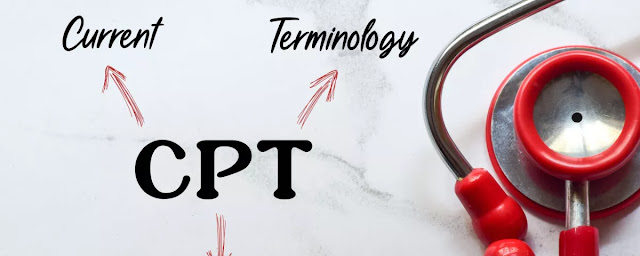How AI Is Changing Medical Transcription in 2025 — What Transcriptionists Need to Know
Medical documentation is changing fast. If you’ve ever searched “what is medical transcription” or “medical transcription meaning,” you’ll recognize the old answer: listen to clinician dictation and type accurate clinical notes. In 2025, however, medical transcription increasingly involves working with AI — not just typing from audio. This article explains how AI medical transcription tools are reshaping the field, what that means for the medical transcriptionist, and concrete steps you can take to stay relevant.
What Is Medical Transcription Today?
At its core, medical
transcription remains the conversion of physician dictation, recorded
encounters, and other clinical audio into structured documentation (discharge
summaries, operative reports, progress notes). But modern definitions now
include AI-assisted workflows: automated transcripts created by speech
recognition and large-language models that human transcriptionists review,
correct, and enrich. If you search for “what is medical transcription” now,
expect to see hybrid models where humans edit AI drafts rather than transcribe
every word from scratch.
Why AI Matters: The Big Shifts
AI is transforming the tech stack and workflows behind
medical documentation:
- Real-time
transcription and ambient scribing. AI can transcribe conversations as
they happen and produce draft notes that clinicians or editors refine.
This reduces clerical time for clinicians and shifts the human role toward
quality control.
- Improved
medical language recognition. Modern models handle specialty jargon,
drug names, and accents better than earlier systems, making outputs more
usable out of the box.
- EHR
integrations. AI tools increasingly connect directly to electronic
health records, auto-filling structured fields, suggesting codes, and
streamlining revenue-cycle tasks.
- Hybrid
human+AI workflows. Organizations are adopting a model where AI
generates drafts and human medical transcriptionists perform post-editing,
auditing, and exception handling.
These shifts are creating both opportunities and
responsibilities for transcription professionals.
What This Means For The Medical Transcriptionist
If you’re wondering what does a medical transcriptionist
do in 2025, here’s the practical reality:
- From
typist to clinical editor. Expect to spend less time transcribing
verbatim and more time reviewing AI-generated notes, correcting clinical
inaccuracies, and ensuring documentation meets regulatory and billing
standards.
- Higher
value skills matter. Deep knowledge of medical terminology,
abbreviations, and clinical workflows becomes a competitive advantage.
Transcriptionists who understand clinical context can spot errors AI
misses.
- New
roles open up. There’s growing demand for QA specialists, AI feedback
annotators, and documentation improvement experts who can build training
datasets and audit AI outputs.
- Tool
fluency is required. Familiarity with voice-recognition tools, cloud
transcription dashboards, and EHR interfaces is increasingly essential.
In short: human judgment, clinical literacy, and technical
comfort matter more than ever.
Accuracy, Limits, And Safety
AI medical transcription has improved but is not flawless.
Errors can occur in complex reasoning, overlapping speech, or when clinical
nuance is critical. That makes human oversight vital—especially for legal and
billing-sensitive documents. Transcriptionists add value by catching hallucinations,
correcting drug names, and maintaining clarity for future care.
HIPAA and data privacy also remain non-negotiable. Any cloud
or ambient tool must meet strict security requirements, and transcriptionists
should know vendor policies, encryption standards, and best practices for
protected health information.
Medical Transcription Examples
To illustrate practical use, here are quick medical
transcription examples of tasks a modern transcriptionist might perform:
- Post-editing
an AI-generated discharge summary: Correcting medication dosing,
clarifying follow-up instructions, and formatting the plan of care.
- Quality
auditing: Reviewing batches of AI transcripts for error rates (e.g.,
drug name accuracy), flagging recurring issues, and sending feedback to
the vendor.
- Structured
data mapping: Moving discrete findings (e.g., vitals, lab results)
from AI text into EHR fields to aid coding and analytics.
These examples show the shift from raw typing to
interpretive editing and systems work.
How to future-proof your career (practical steps)
If you want to stay competitive as a medical
transcriptionist, take these actionable steps:
- Learn
AI and transcription platforms. Get hands-on experience with cloud
transcription dashboards and voice-recognition correction workflows.
Practice post-editing and learn how to submit feedback to improve model
outputs.
- Sharpen
clinical knowledge. Regularly review medical terminology, commonly
used abbreviations, and specialty language. Practice with real
transcription samples to improve speed and accuracy.
- Gain
EHR familiarity. Understand how documentation maps into electronic
records and how structured fields and flowsheets are populated.
- Pursue
QA and CDI (Clinical Documentation Improvement) basics. Certifications
or short courses in CDI and medical coding can open higher-paying roles.
- Build
soft skills. Become adept at communicating edits to clinicians and
working diplomatically in high-pressure environments.
For employers: how to implement AI responsibly
Organizations adopting AI medical transcription should focus
on governance and people:
- Pilot
tools in controlled settings, measure both clinician time savings and
documentation accuracy.
- Train
transcriptionists to be editors and QA reviewers.
- Establish
clear policies for data handling, vendor contracts, and clinical
oversight.
- Use
human review for critical or ambiguous notes and create feedback loops to
improve AI.
Final takeaways
AI is not replacing medical
transcriptionists—it’s changing what they do. The question “what
is medical transcription” now includes supervising AI, editing transcripts, and
ensuring safe, accurate clinical documentation. For professionals who upskill
into editing, QA, and EHR-integrated roles, the future is full of opportunity.
For employers, AI offers gains in clinician time and documentation
completeness, but success depends on governance, training, and human oversight.


Comments
Post a Comment